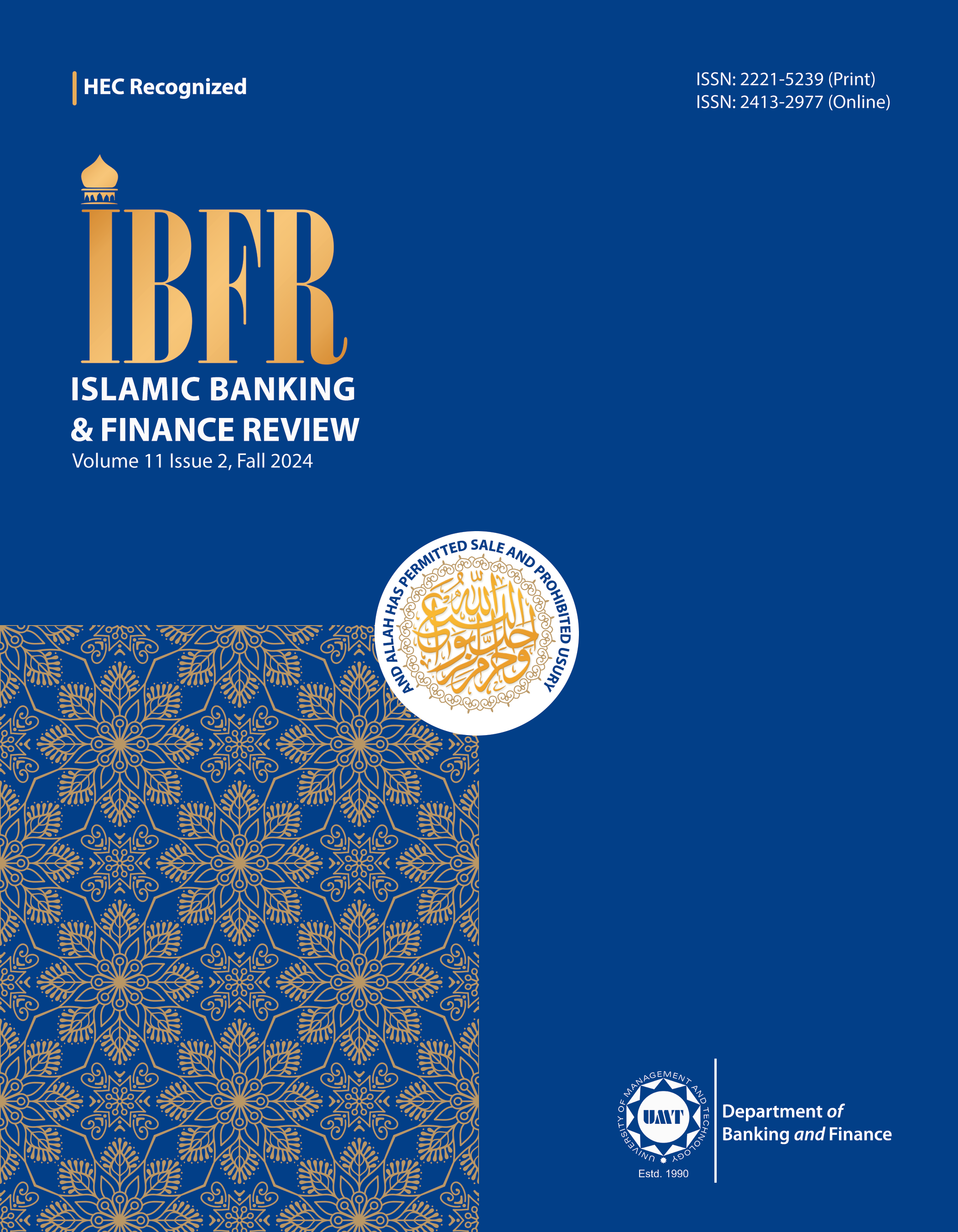Unveiling the Risk Determinants in Islamic and Conventional Banks: Empirical Evidence from Pakistan
Abstract
 Abstract Views: 0
Abstract Views: 0
This study aims to compare the determinants of the four main risks (credit, liquidity, operational, and regulatory risks) that Islamic and conventional banks face by focusing specifically on Pakistan's regulatory and institutional settings. The study collected unbalanced panel data for the period 2005-2022 and employed the Generalized Method of Moments (GMM-IV) approach to estimate outputs. For the robustness check, the samples were pooled for both groups and the results are re-estimated. The study found that there exist significant differences in the risk determinants of both types of banks. Similarly, there was found a positive and significant association of non-performing loans (NPL) with lag terms for conventional banks (CBs) and an insignificant association for Islamic Banks (IBs). Regarding firm performance, the study found that it does not explain the credit risk for IBs, but reported improved results for CBs. Similarly, the study found significant differences in terms of efficiency for both banks. Additionally, it was determined that derivative contracts increase liquidity and operational risk for CBs, while no such significant association exists for IBs. The findings provide valuable insights for Pakistan's regulatory and standard-setting institutions when developing governing, risk management, and overall operational policies and frameworks for Islamic and conventional banks. The inherent differences in the overall functioning of these banks make their anatomy of risk significantly different. As such, the governing regulations, for example, the Prudential Regulations issued by the State Bank of Pakistan (SBP), need to account for these differences. Although the current literature examines the differences between Islamic and conventional banks from different perspectives, a thorough and holistic comparison is missing. The current study aims to address this gap.
Downloads
Copyright (c) 2024 Ozair Siddiqui, Naveed Khan, Zaheer Abbas

This work is licensed under a Creative Commons Attribution 4.0 International License.
Authors retain copyright and grant the journal right of first publication with the work simultaneously licensed under a Creative Commons Attribution (CC-BY) 4.0 License that allows others to share the work with an acknowledgement of the work’s authorship and initial publication in this journal.












